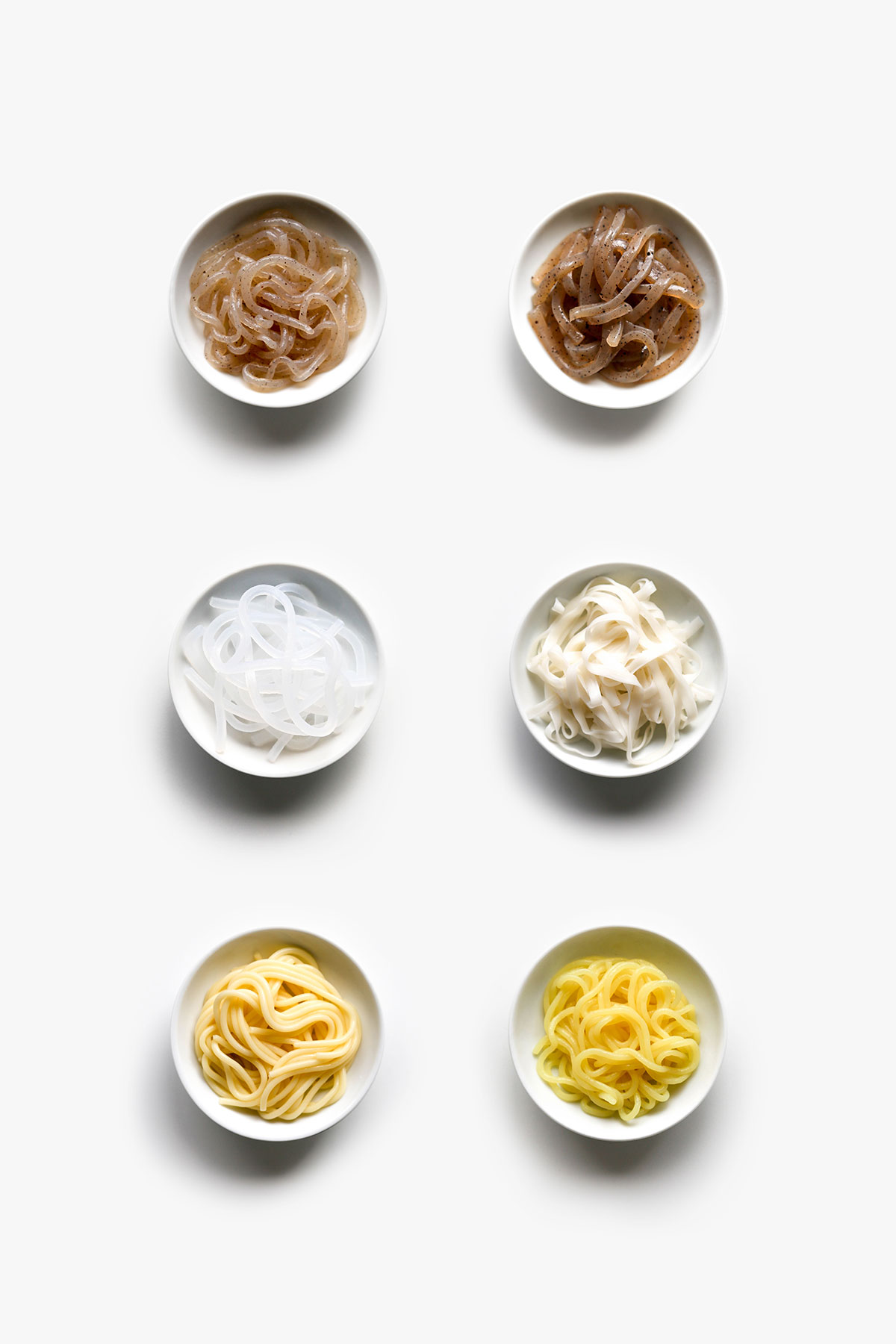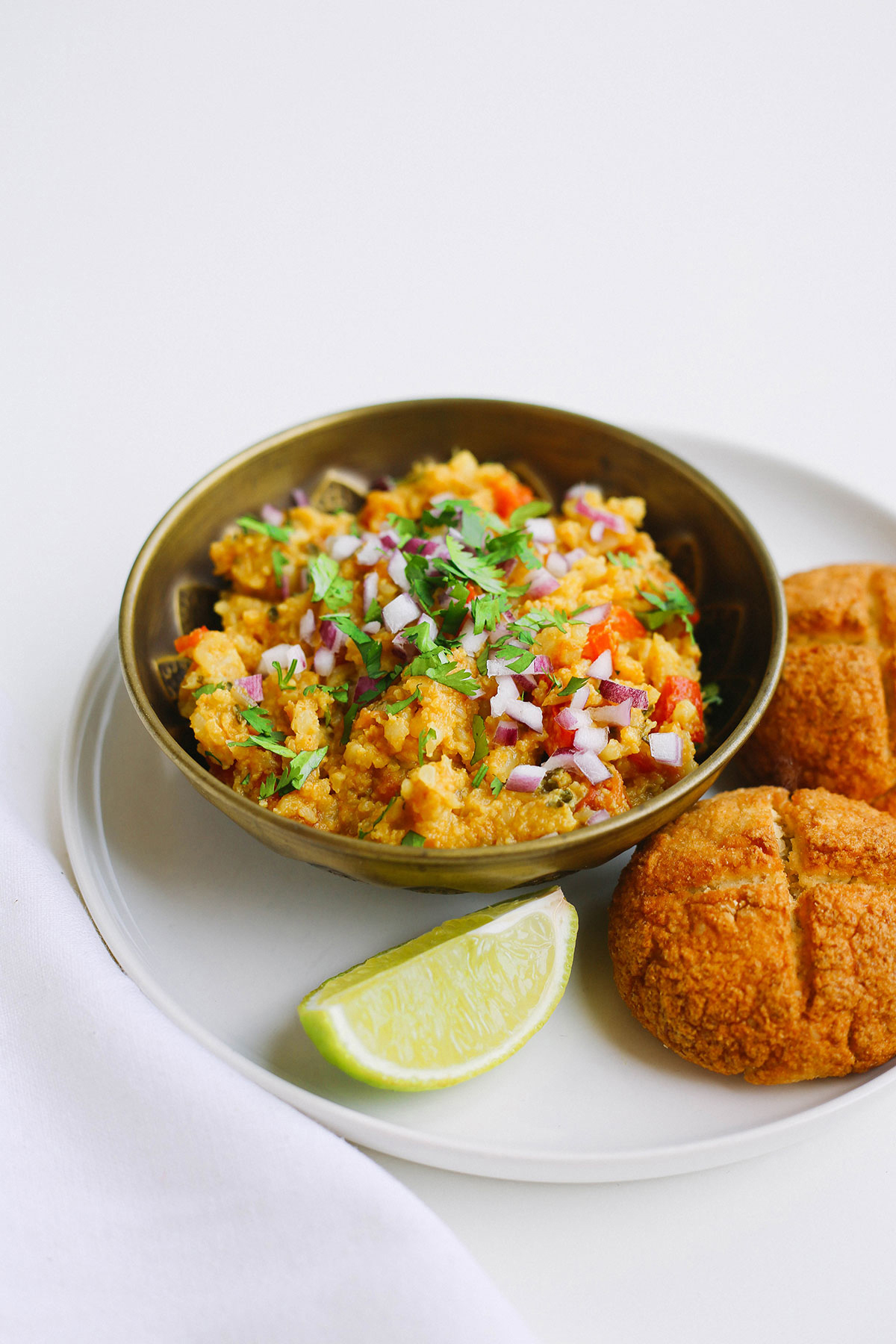While I love the variety a keto diet allows, it has sometimes been hard to face the fact that some of my most adored foods are now off limits. One of my biggest fears was saying farewell to pasta. While researching alternatives, I soon stumbled across shirataki noodles. My first thoughts were that they sounded Japanese and that I’d never heard of them before.
Please note: This post contains affiliate links. For more information, see my disclosures here.
What are Shirataki Noodles?
Shirataki noodles are made from konjac yams and can be easily found in Japanese supermarkets. They largely comprise of glucomannan, which is extracted from the yam and mixed with water to turn it into konnyaku. The konnyaku is then shaped into many forms, including the noodles called shirataki. They are also commonly known as konjak noodles, konnyaku noodles and miracle noodles.
Can you eat Shirataki on Keto?
On average they comprise of 97% water and 3% fibre, leaving less than 1 gram of net carbs per 100g. The noodles are full of indigestible dietary fiber which means no carbohydrates or calories, making them the perfect base for a keto meal. However, this also means they lack any real nutrition and should be paired with other ingredients. They pass right through your body and are known in Japanese as “a broom for your stomach” so be careful not to over consume them!

How do you prepare Shirataki?
Shirataki are commonly used in dishes such as sukiyaki or oden and I’ve tried many different brands that vary widely in shape, aroma and flavor. When you first open a packet the fishy smell can sometimes be strong and the slippery texture off-putting; but after rinsing under water, boiling for 2 minutes and dry roasting for 1 minute in a frying pan, I find they become a perfect blank canvas.
Shirataki in America
There are lots of brands available in the states offering both wet and dried varieties. Some of the most popular brands include Miracle Noodles, Better Than Noodles, House Foods and Skinny Noodles which are affordable when bought online in bulk.
Shirataki in Australia
Most products are dried varieties found in the health food sections of supermarkets. The Slendier range is available at both Coles and Woolworths and includes fettuccine, spaghetti, noodle, lasagna, angel hair and rice versions. You can also find Chang’s Wok Ready Lo-Cal Noodles at Coles.
Shirataki in Japan
Shirataki noodles (白滝) are commonly found in all large Japanese supermarkets. Packed in liquid packages near the refrigerated tofu section or as a dried product on the shelf; there are a wide variety of shapes and styles. My favorite brand is Kibun, with their flat translucent noodles perfect for Asian dishes and the rounded yellow ones for ramen and Italian style pastas. They’ve quickly become a staple in my fridge and I’ve noticed they often sell-out.
Note: take care to read the labels in Japanese supermarkets as carb-heavy potato starch noodles are often displayed amongst the shirataki. I learnt that one the hard way!
Some common Japanese shirataki brands include:

Kibun Ramen Pasta (180g)
紀文糖質0g麺 丸麺
My favorite, these noodles most closely resemble regular spaghetti. They are cut into short pieces and the texture is chewy and a little denser than other brands. There is no smell when opening the pack, so they barely even need washing. Love using these with Italian style pastas.
Dietary Fibre: 11.5g
Price: ¥156
Website

Kibun Flat Stir-Fry Noodles (180g)
紀文糖質0g麺
Flat white stir-fry noodles, cut into short pieces. The texture is chewy and bouncy. Just like their ramen variety, there is zero smell when opening the pack, so they barely need washing. Another favorite of mine and perfect for pad thai.
Dietary Fibre: 11.7g
Price: ¥156
Website

Konnyaku Noodles (200g)
Thick udon sized noodles, brown in color with specks of seaweed added. These had a strong smell upon opening, so are ideally prepared by boiling and dry pan frying first. Chewy and dense, these might make a nice udon replacement.
Dietary Fibre: not labelled

Topvalu Chinese Style Noodles (180g)
トップバリュおから入りこんにゃく麺
中華めん風
Long ramen style noodles, cut into short pieces. Bright yellow in color when packaged, however the color fades when boiled which made my ramen look a little sad. The texture is soft and chewy. Strong aroma when opening the pack, but disappears after cooking.
Dietary Fibre: 6.1g
Price: ¥138
Website

Topvalu Organic Domestic Konnyaku (100g)
グリーンアイオーガニック オーガニック国産 糸こんにゃく
These are thinner konnyaku style noodles, hence the brown color. This is a smaller pack than most products, so handy for a single serving. They are still sitting in my fridge, so will update with tasting notes when I’ve tried them out!
Dietary Fibre: 2.3g
Price: ¥98
Website










18 comments
I love asian flavours and also enjoy those noodles. Could you give me a few recipe options of what to do with them?
Hi Jennifer, I love these noodles too! I find these are a great low carb replacement in most noodle and pasta dishes; such as hot pot, stir fry and ramen. Though these ones aren’t strictly Asian flavored – here are a few recipes from my site:
Keto Japanese Mushroom Pasta with Shirataki
Keto Pad Thai with Chicken and Shirataki Noodles
Keto Creamy Avocado Pasta with Shirataki
I love using these noodles, I’m just confused about the chickpea ingredients. This is OK on keto?
Hi Lynette, thanks for commenting! Shirataki noodles are made from konjac yams and shouldn’t contain any chickpeas. Chickpeas are relatively high in carbs and should be avoided if you’re following a keto diet 🙂
I was just googling looking for info on keto diets and shirataki noodles and I came across your site. You can get these noodles in Europe, but they can be hard to find. A new company called Roh Nudeln (‘raw noodles’ in German) sells them now online. I’m not affiliated, just thought I’d share since you have sources for other places!
Hi Erin, thanks so much for the local tip! I’m really happy to see that shirataki noodles are becoming much easier to find around the globe 🙂
I get mine on Amazon, brand name Nupasta.
Only have them once a week when I make the family spaghetti.
Thanks for the tip JoyAnn, that’s a new brand for me to try!
Hallo, do you know where in Germany these would be available, or can they only be bought online.
Best regards
Martin
Hi Martin, thanks for commenting! You should be able to find a wide assortment of Shirataki Noodles on Amazon. Best of luck!
Hi thanks for your sharing. Wonder is there any online shop i can get those Japanese ramen shirataki?
Hi Ida! It really depends on where you live and which brands will ship to you locally. I find the assortment of Shirataki noodles available on Amazon to be quite broad in most regions. 🙂
Oh my goodness, I found you by accident! My fiance is Japanese and he will never give up his rice or ramen, but I would like to prepare things alongside his high carb life. (He’s decreased his sugar intake at least since I’ve been doing Keto, and of course just by doing that, he’s lost 10 pounds – men!) I love your blog and will follow and share it!
Hi Julie, it’s so nice to meet you! Thanks so much for commenting, I really hope the site is helpful. Rice and ramen were staples of my life in Japan (in the beginning) but I slowly found with slight adjustments there are so many amazing low carb alternatives! Thank you for your kind words and for sharing, it means the world to me. 🙂
Hi, I’m new to keto and I didn’t dare to buy shirataki noodles because they are made of yam, and I read that people on keto shouldn’t eat any root vegetables, although they are zero to low carb? I am confused!
Hi Grace! Thanks for your question, I can totally understand why it’s so confusing! As I’ve written above, shirataki noodles are full of indigestible dietary fiber which means no carbohydrates or calories. This makes them very keto-friendly and an exception to the root vegetable rule. However, including them in your diet really comes down to the individual. I really enjoy these from time to time myself! 🙂
I am grateful for your finds. Am on keto and your information about Shirataki noodles is a blessing from heaven. I cannot import these as I live in Costa Rica and customs will not allow. But there is a supermarket chain that carries hard to find stuff and I will look there. Again, thank you.
Hi Gaye, I’m so glad to hear this was helpful, thanks for commenting! While it’s a shame you can’t import them, I have my fingers crossed for you that you can find them at your local supermarket! 🙂